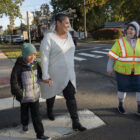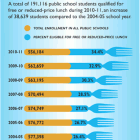Disparities
Race, Economics, Environment Continue To Drive State’s Asthma Disparities
|
Kamyle Dunn used to sleep with her hand resting on her mother’s chest so she could feel it expand and contract and know that her mom hadn’t stopped breathing during the night. Dunn’s mother, Maria Cotto, has long had severe asthma. Dunn inherited the condition, though she has mostly grown out of it as an adult. Now, Dunn’s 12-year-old son also has severe asthma. “People kind of shrug it off as not that big of a deal,” said Dunn, who lives with her family in East Harford. “But I see what it’s done to my mother, and I see what it’s doing to my son, and what it has done to me.”
In Connecticut, 10.6% of children and 10.5% of adults have asthma, according to state data from 2019. According to DataHaven’s 2021 Community Wellbeing survey, 12% of adults have asthma.

